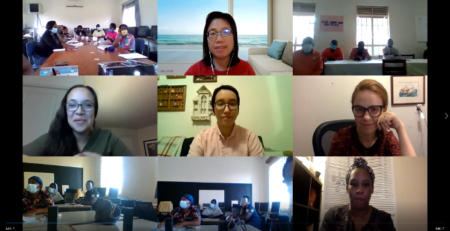“We want to engage the private sector in development, but don’t know how”: Evidence-based Toolkit for Operationalizing Private Sector Engagement (PSE) at USAID
This post originally appeared in MarketLinks on February 27, 2023.
Even though USAID MBIOs have identified the value of engaging the private sector in the development sector (even consulted USAID’s PSE policy and the PSE Opportunities Tool), the problem of ‘where to begin’ and ‘how to operationalize private sector engagement’ remains a challenge for both USAID and partners. Through collaborative research with USAID’s PSE Hub and LASER PULSE consortium, researchers from Purdue University investigated different ways in which PSE is operationalized at USAID, and developed evidence-informed tools and frameworks for anyone interested in operationalizing PSE to utilize in practice:
- How to design/ configure these private sector engagements
- How to systematically identify and address the bottlenecks faced in the partnership processes once a formalized engagement between USAID and the private sector is established.
The research team used multiple methods to understand perspectives and lived experiences from not only USAID personnel in Missions, Bureaus, but also private sector organizations and implementing partners. The start-to-finish processes for eight (8) different types of PSE between USAID and the private sector were examined as well. Through this research we found that regardless of sector and region, private sector engagement at USAID occurs in three iterative phases: exploration, formulation and partnership implementation.
Key Takeaways and Tools
Demystifying private sector engagement at USAID Part 1: Designing engagements and partnerships with private sector organizations
1. Private Sector Engagement at USAID is not “one-size-fits-all”
Our research found that there are different ways in which the private sector engagement can be structured based on the level of involvement and role the private sector plays in that engagement. In one operational model, USAID engaged the private sector through an implementing partner, where private sector organizations were assisted to access new markets. Another operational model involved philanthropy-based private sector engagement, where the private sector organizations were financial supporters to influence local stakeholders through their corporate social responsibility programs. A third operational model was impact investment model, where USAID engaged with investment organizations to fundraise with public/private entities and, identify and invest in small-medium sized enterprises. A fourth operational model was a multi-stakeholder engagement model, where USAID, private sector organizations and other stakeholders co-created and co-implemented solutions to development challenges.
Field-based PSE Case Narratives. To better understand different ways to engage the private sector, we have generated a collection of in-depth, process-based narratives of the eight different private sector engagements examined through this research study. This collection provides a multi-faceted understanding of PSE conducted by USAID. These case studies are not written as success stories, which are more typical in international development. The purpose of these case studies is to showcase the complex, iterative processes that are typically used while exploring, formulating and implementing these partnerships. These case studies present the narrative story of the partnership from a process perspective, including different external events or internal changes that resulted in challenges or bottlenecks in the process and impacted the partnership’s progress and planned outcomes.
These case studies are to be used by any individual in USAID, PS, or implementing partner who is trying to understand how to establish and implement such partnerships effectively. These case studies can be used for training and learning purposes. These case studies show that there are different ways to engage the PS in development, different models for operationalizing them, PS can play different roles and have different levels of involvement in them, and that these partnerships are dynamic, complex systems that require enough time, resources and monitoring to keep them on track for planned progress. These case studies showcase how USAID’s PSE Lifecycle is operationalized by Missions, PS and other partners. They are context-specific, but still show processes that can be replicated. We recommend that these case studies be used to understand the nuances of PSE and complement them with other tools and frameworks developed as part of this research.
2. Designing and formulating engagements with the private sector requires inclusion of private sector perspectives in an intentional and systematic process
Our research uncovered that there were several factors that slowed down or even resulted in unsuccessful attempts at formulating engagements with the private sector. This led to wasted time and effort, frustration and even hesitation to attempt PSE in the future. We found that USAID and implementing partners involved in designing private sector engagement activities were operating from a ‘development’ actor’s perspective and often did not understand private sector perspectives. Thus, theories of change developed for activities that included private sector engagements often lacked:
- Understanding of current market dynamics
- Private sector’s value propositions and shared value
- Private sector’s capacity to contribute to the activity, both financially and through resources
- Understanding of unintended consequences of USAID’s policies on private sector’s operations
Designing Private Sector Engagement Workbook. Based on the research findings, we identified an intentional and systematic process for USAID and implementing partners to design private sector engagement activities. This process includes collaborating with the private sector to incorporate their perspectives and potentially help identify any assumptions, risks or unintended consequences that the private sector engagement activity could encounter. It provides guiding questions, which when thought through collectively with the private sector, could be a useful addendum to USAID’s Theory of Change (TOC) workbook, resulting in a more inclusive and realistic TOC for programming and activities designed around private sector engagement. Our workbook identifies ten (10) factors that need discussion when designing and formulating PSE. For example, it is critical for USAID and implementing partners to recognize if the type of private sector being engaged is an SME such a local family-business, or a multinational corporation; as the purpose of engagement, the operational model such as configuring the engagement, the role of that private sector would differ vastly. Thus, this workbook is developed to aid the design of partnerships with different types of PS with 10 guiding questions that should be considered in collaboration with private sector actors who will be engaged or impacted by the programming. We recommend using this workbook during the exploration and formulation phases of the PSE Lifecycle.
Demystifying private sector engagement at USAID Part 2: Monitoring and managing ‘formalized’ private sector engagements
3. Partner’s experience and commitment is connected to their ‘Perceived Worth of Continued Engagement.’
Our research found that when the private sector did not have a positive and satisfactory experience engaging with USAID, their level of commitment and level of engagement reduced, resulting in bottlenecks in the process and suboptimal outcomes of PSE activities. Through our research findings, we identified several factors both internal (partnership dynamics) and external (changes in the business environment) that result in either a more positive or a more negative
‘partnering experience’. Understanding these factors that incentivize and disincentive engagement can provide insights for USAID to foster sustained PS engagement
throughout the PSE lifecycle. PS’ ‘partnering experience’ at any point in the PSE Lifecycle was based on whether they perceived that there was ENOUGH WORTH in staying engaged and continuing their participation in the PSE activities. In the PSE Lifecycle, we establish this phenomenon as ‘PS’ Perceived Worth of Continuing Engagement (PWCE)”. When the ‘partnering experience’ was positive, “BENEFITS” of engaging outweighed the ‘Costs’, and PS continued their participation. On the other hand, when the ‘partnering experience’ was negative, the “COSTS” of engaging outweighed the ‘Benefits’, and the PS reduced or withdrew their support. This ratio fluctuated across all three phases of the PSE Lifecycle.
Assessing ‘partnering experience’ Survey. This questionnaire was developed to regularly assess private sector partner’s partnering experience throughout the PSE Lifecycle. This survey can be used as a pulse check as it allows partners to self-assess whether they are having a positive or negative partnering experience at a moment-in-time, and should be followed up with constructive dialogue to address any issues identified from the survey results. The insights from this survey are particularly useful for USAID as it provides insights on how to incentivize the PS partners to continue their commitment to the engagement throughout the PSE lifecycle and potentially after the partnership ends. This survey should be used during the Implementation phase, after the partnership is established, and when partnership activities are being implemented.
4. Achieving ‘enduring results’ requires regular monitoring of private sector engagement processes to identify bottlenecks and address root causes.
Our research showed that even though the PSE Policy advocates for viewing the private sector as “partners” for development, one of the challenges in the way private sector engagements are monitored and managed at USAID are in the same realm as the way contracts with implementing partners and NGOs are managed. For example, the monitoring and evaluation (MEL) reporting requirements are limited to programmatic outputs and outcomes, and lack monitoring processes and indicators for partnering processes. Our research showed several general indications when the PSE process faced bottlenecks. These signs or ‘red flags’ were observed throughout the PSE Lifecycle across all three phases. Not having enough understanding of PS’ perspectives when designing the PSE activities and Theory Of Change, not having enough alignment on the ‘tactics’ of how to operationalize the engagement, and unsatisfactory partnering experience for PS during the different phases of the PSE Lifecycle were found to be three key reasons that caused bottlenecks in the PSE Lifecycle of formalized engagements and are explained further below. We found each of these root causes were related to one another. These bottlenecks resulted in delays, frustration, slow decision-making, slow progress, wavering commitment and conflict.
Checklists for identifying bottlenecks & root causes in PSE processes. This tool was developed to help facilitate an intentional, timely and systematic way to monitor the partnership’s processes and reduce collaborative challenges that partners typically face in such engagements. This tool aims to provide a starting point for those involved in the partnership/ engagement to identify any ‘red flags’ or signs such as slowing down of the partnership processes, slow progress, frustration among partners. These are indications of ‘collaborative inertia’. Secondly, once these signs are observed, the tool then provides another checklist to help pin-point some root causes. This tool allows partners to have some common language and have a constructive dialogue to address the root causes. There are two checklists provided as a part of this tool: (i) the first checklist is to be used to identify any signs of bottlenecks in the partnership processes; (ii) the second checklist allows you to dig deeper to uncover what might be causing the bottlenecks. We recommend using this checklist regularly as early as the Formulation phase, but especially during the Implementation phase of the PSE Lifecycle. This checklist tool can be used as frequently as needed to keep a pulse on the partnership process. If used regularly, it allows partners to identify and resolve issues in a timely manner.
This blog piece draws upon the extensive research conducted by Purdue University researchers in collaboration with USAID’s PSE Hub and LASER PULSE Consortium. The executive summary for the research conducted can be found here.
For more information about the toolkit and the research, please contact the authors, Dr. Priyanka Brunese (pshah@purdue.edu) and Dr. Yuehwern Yih (yih@purdue.edu).
List of Tools to Operationalize PSE by Phase:
Exploration & Formulation
- Field-based PSE Case Narratives: Use to understand different ways USAID has conducted PSE processes across different sectors and regions. [Developed as part of this research study]
- Evidence Gap Map: It visually represents existing evidence, using a matrix of USAID’s conceptualization of PSE means and value propositions that both the private sector and development actors offer.
- PSE Opportunities Tool: Use when developing the Country Development Cooperation Strategies (CDCS), at the strategic level, activity design, or at the partnership level (including for unsolicited proposals from the private sector).
- Designing Private Sector Engagement Workbook: Use when designing and formulating the partnership structure, processes and implementation activities. [Developed as part of this research study]
- Harmonizing Indicators Tool: Use when identifying and negotiating shared partnership metrics for reporting.
Implementation
- Assessing ‘partnering experience’ Survey: Use to monitor partnership relationship health throughout the PSE Lifecycle. [Developed as part of this research study]
- Checklists for identifying bottlenecks & root causes in PSE processes: Use to collectively identify common partnership challenges and bottlenecks that might be causing delays in the partnership process; and to identify root causes that are contributing to bottlenecks in partnership processes, and for facilitating constructive, problem-solving dialogue among partners. [Developed as part of this research study]
Closeout
- Partnership Outcome Review: Use to better understand internal USAID evaluation requirements, processes, and practices during partnership closeout.
- Partnership Success Dissemination: Use to communicate partnership results via a case study.
- Measure Enduring Results: Use to design an ex-post evaluation of partnership outcomes.









Leave a Reply
You must be logged in to post a comment.